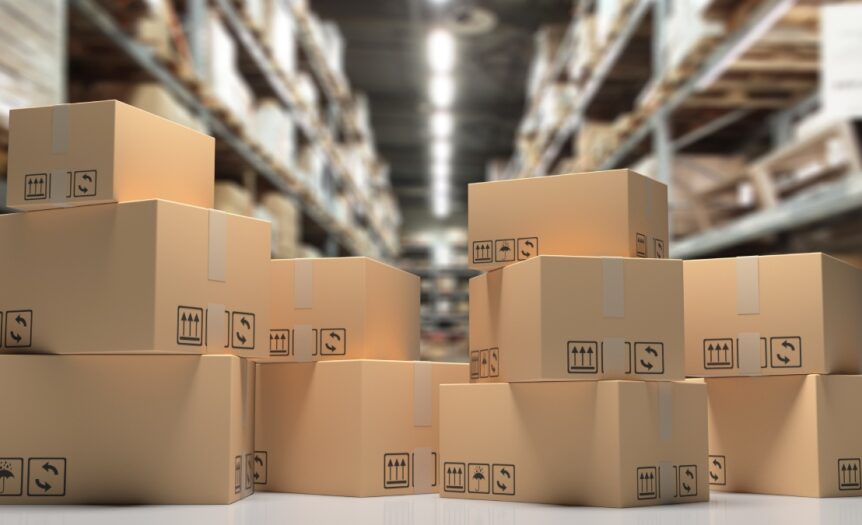Packaging plays a crucial role in the lifecycle of any product, acting as both a protective barrier and a marketing tool. From ensuring safe transit to catching the eye of consumers on crowded store shelves, effective packaging can make or break a product’s success. Understanding the fundamentals of packaging is essential for businesses looking to optimize their products’ appeal and functionality.
Let’s look at what to know about packaging products and the key aspects to consider when designing and implementing packaging for your goods.
The Importance of Packaging
Packaging serves two main purposes: protection and promotion. On the one hand, it must safeguard the product from damage during transportation and storage. This is especially important for fragile or perishable items that can easily sustain damage in transit.
On the other hand, packaging also acts as a marketing tool, helping to differentiate products from competitors and catch the attention of potential customers. In today’s highly competitive market, creative and eye-catching packaging design can be just as important as the quality of the product itself.
Key Aspects of Packaging
When it comes to packaging products, there are several key aspects to consider.
- Materials: The materials in packaging can vary greatly. You should carefully choose them based on the product’s characteristics and needs. Common packaging materials include cardboard, plastic, glass, and metal.
- Functionality: Packaging must serve its purpose effectively, whether it needs to protect the product or make it easier to use. For example, food packaging may need to keep products fresh while also being easy to open and reseal.
- Design: As mentioned earlier, packaging design plays a crucial role in attracting customers’ attention. It should reflect your brand’s identity and stand out from competitors on store shelves.
- Sustainability: In today’s environmentally conscious world, sustainable packaging is becoming increasingly important. Consider using eco-friendly materials and designs to reduce your company’s carbon footprint.
- Cost: The cost of packaging can greatly impact a product’s overall profitability. Finding the right balance between aesthetics and budget is crucial for businesses looking to maximize their margins.
Packaging Regulations and Compliance
Aside from the practical considerations of packaging, businesses must also be aware of packaging regulations and compliance standards. These laws and guidelines ensure the safe packaging of products for consumers and the environment.
Depending on your product’s nature, there may be specific regulations to follow when it comes to labeling, materials, or handling. It’s essential to stay updated on these regulations and make any necessary adjustments to your packaging accordingly.
Packaging plays a crucial role in the success of any product, so you need to know about it. Whether you’re considering reasons to add a conveyor to your packaging line or looking into eco-friendly packaging options, understanding the fundamentals of packaging is essential for businesses looking to thrive in today’s competitive market. Keep these key aspects and regulations in mind when designing and implementing your product’s packaging, and you’ll be on your way to creating successful and sustainable products.









 Deering Estate
Deering Estate
 Massage Envy South Miami
Massage Envy South Miami
 Calla Blow Dry
Calla Blow Dry
 My Derma Clinic
My Derma Clinic
 Sushi Maki
Sushi Maki
 Sports Grill
Sports Grill
 The Healthy Kitchen
The Healthy Kitchen
 Golden Rule Seafood
Golden Rule Seafood
 Malanga Cuban Café
Malanga Cuban Café

 Kathleen Ballard
Kathleen Ballard
 Panter, Panter & Sampedro
Panter, Panter & Sampedro
 Vintage Liquors
Vintage Liquors
 The Dog from Ipanema
The Dog from Ipanema
 Rubinstein Family Chiropractic
Rubinstein Family Chiropractic
 Your Pet’s Best
Your Pet’s Best
 Indigo Republic
Indigo Republic




 ATR Luxury Homes
ATR Luxury Homes


 2112 Design Studio
2112 Design Studio
 Hamilton Fox & Company
Hamilton Fox & Company
 Creative Design Services
Creative Design Services
 Best Pest Professionals
Best Pest Professionals
 HD Tree Services
HD Tree Services
 Trinity Air Conditioning Company
Trinity Air Conditioning Company
 Cisca Construction & Development
Cisca Construction & Development
 Mosquito Joe
Mosquito Joe
 Cutler Bay Solar Solutions
Cutler Bay Solar Solutions


 Miami Royal Ballet & Dance
Miami Royal Ballet & Dance
 Christopher Columbus
Christopher Columbus
 Pineview Preschools
Pineview Preschools
 Westminster
Westminster
 Carrollton
Carrollton
 Lil’ Jungle
Lil’ Jungle
 Frost Science Museum
Frost Science Museum
 Palmer Trinity School
Palmer Trinity School
 South Florida Music
South Florida Music
 Pinecrest Orthodontics
Pinecrest Orthodontics
 Dr. Bob Pediatric Dentist
Dr. Bob Pediatric Dentist
 d.pediatrics
d.pediatrics
 South Miami Women’s Health
South Miami Women’s Health

 The Spot Barbershop
The Spot Barbershop
 My Derma Clinic
My Derma Clinic




 Miami Dance Project
Miami Dance Project

 Rubinstein Family Chiropractic
Rubinstein Family Chiropractic
 Indigo Republic
Indigo Republic

 Safes Universe
Safes Universe
 Vintage Liquors
Vintage Liquors
 Evenings Delight
Evenings Delight





 Atchana’s Homegrown Thai
Atchana’s Homegrown Thai
 Baptist Health South Florida
Baptist Health South Florida

 Laser Eye Center of Miami
Laser Eye Center of Miami
 Visiting Angels
Visiting Angels
 OpusCare of South Florida
OpusCare of South Florida

 Your Pet’s Best
Your Pet’s Best





 HD Tree Services
HD Tree Services
 Hamilton Fox & Company
Hamilton Fox & Company


 Creative Design Services
Creative Design Services